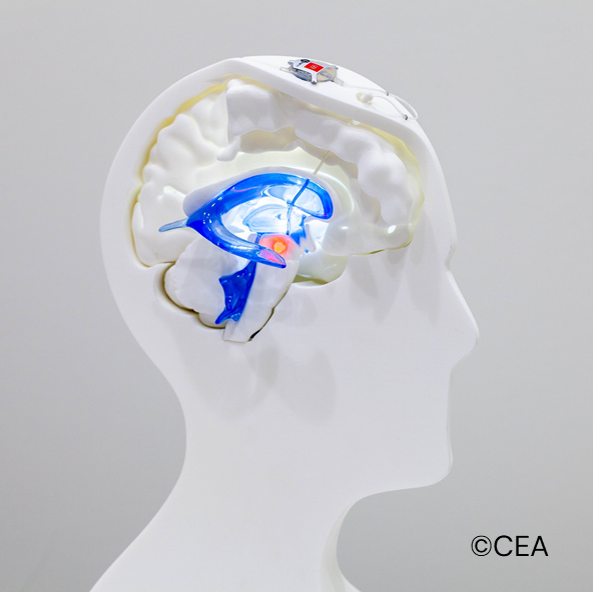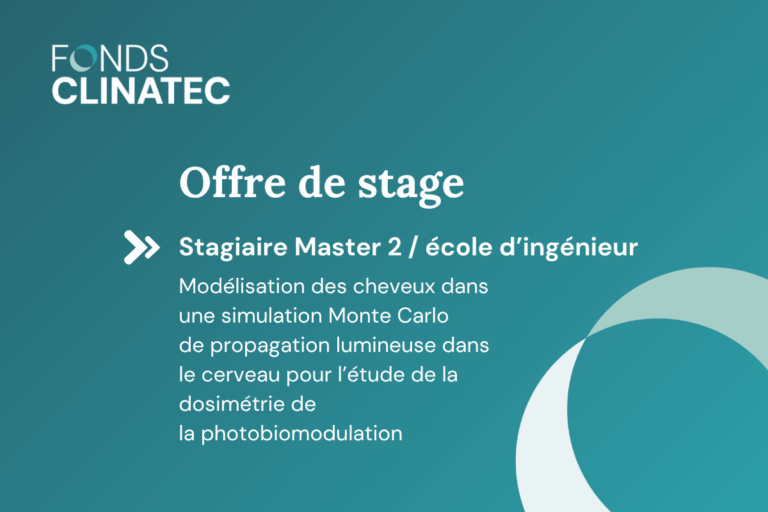
La presse parle de nous !
Un très bel article paru ce weekend dans Le Monde met en lumière la présentation du Pr. Stephan Chabardès, neurochirurgien, chef de service neurochirurgie au CHU Grenoble Alpes et responsable du secteur hospitalier de Clinatec, à l’occasion de WSSFN 2024 (Congrès Mondial de Neurochirurgie Stéréotaxique et Fonctionnelle) à Chicago portant sur l’utilisation de photobiomodulation intracrânienne pour stabiliser la maladie de Parkinson et les premiers résultats de l’essai clinique associé.
Le Fonds Clinatec est particulièrement heureux et fier d’avoir pu contribuer, dès l’origine, à cette avancée grâce au soutien de ses mécènes. Une nouvelle fois, Clinatec ouvre un chemin inédit vers une solution thérapeutique non médicamenteuse susceptible d’améliorer la qualité de vie des patients. Dr Laurent Hérault, Directeur du Fonds Clinatec.
Lire l’abstract de la communication orale du professeur Chabardès
(en anglais)
RESTORING DOPAMINERGIC FUNCTION AFTER CHRONIC INTRACRANIAL PHOTOBIOMODULATION IN DE NOVO PARKINSON’S PATIENTS: A PROOF OF CONCEPT
Introduction
Recent studies in animal models of Parkinson’s disease (PD) have indicated that photobiomodulation (PBM) i.e., the use of red to near infrared light (λ=600-1300 nm) on body tissues, reduces the degeneration of midbrain dopaminergic neurons with favorable safety profile. Most manifestations of PD are related to the loss of dopaminergic neurons located in the substantia nigra pars compacta (SNc). Mitochondrial dysfunction is one of the key mechanisms leading to neurodegeneration in PD.
PBM restore mitochondrial function, resulting in an increase in adenosine triphosphate (ATP) energy production in cells and therefore can enhance survival of dopaminergic neurons and improve motor behaviour.
Here we report the first-in-man clinical and imaging data at 2 years f.up in 2 de novo PD patients fitted with a bespoke intracranial device delivering 670 nm light close to both SNc. We compared those data to 2 matched controls PD patients. The patients are part of a larger randomized, open-label case-control study (NCT04261569).
Methods
Four patients newly diagnosis with PD (less than 2 years), naive of any treatments were randomised to either PBM or control group. The probe of the PBM device was implanted into the floor of the 3rd ventricle, connected to a rechargeable battery. Clinical and PET imaging evaluation were compared to baseline and included among others MDS-UPDRS scale performed every 6 months and PET imaging every year using [11C]PE2I ligand.
Results
No abnormal feeling nor adverse events were noticed by the patients after chronic PBM. PBM Group: MDS-UPDRS scores part III improved at 24 months, from 38/132 to 23/132 and from 18/132 to 17/132 in patient#1 and #2 respectively, off drugs conditions. Control group: MDS-UPDRS scores part III deteriorated as expected from 20/132 to 33/132 and from 29/132 to 38/132 in patient#3 and #4 respectively, off drugs conditions.
With PBM, [11C]PE2I-PET at 12 (patient#1) and 18 months (patient#2) showed a remarkable increase of the [11C]PE2I BPND in the caudate nucleus, the nucleus accumbens and the putamen. The [11C]PE2I BPND decreased as expected in all basal ganglia in controls patients.
Conclusions
PBM is well tolerated and show promise for stabilzing motor symptoms and restoraring partially dopaminergic function



